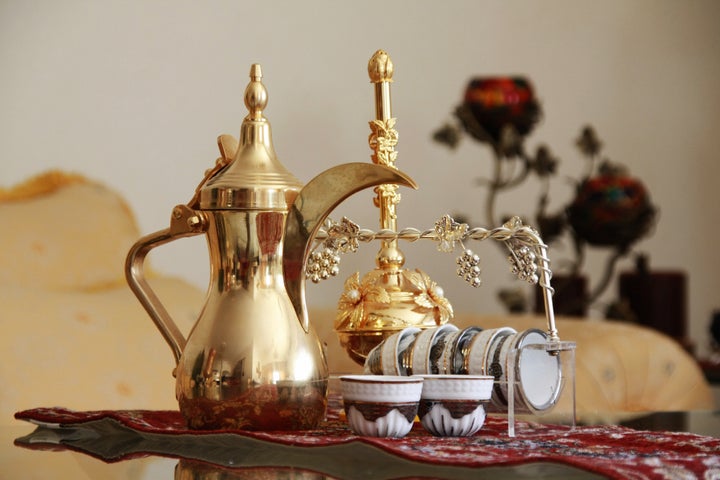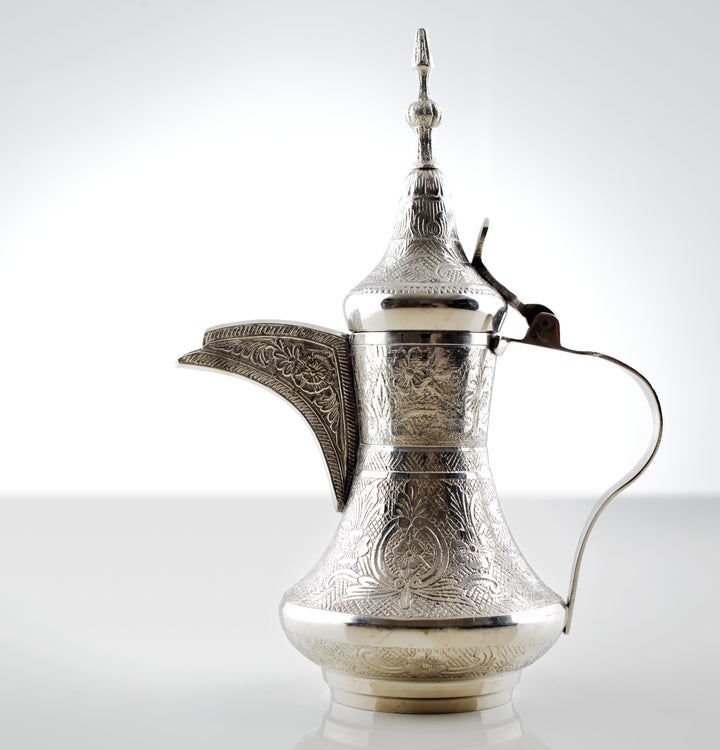In response to the Muslim travel ban, one way for us to navigate these times is to educate ourselves ― to learn what we can about the cultures of the nations that are affected and the surrounding areas. After all, food is the distillation of community and culture to its most basic form. We hope you’ll cook along with us in support.

If you’re tired of your daily coffee routine, let us make a suggestion: Give Arabic coffee a try. It’s strong, it’s free of sweeteners, and it’s beautifully fragrant thanks a heavy dose of cardamom.
Here’s the first thing you need to know about Arabic coffee: there are many variations on how to make it, about as many as there are nations where it’s enjoyed ― such as Lebanon, Iraq, Yemen and Saudi Arabia. But coffee culture runs deep in this region, so there are some constants. And that’s what we’re going to talk about here.
First, Arabic coffee is not brewed through a filter ― it is boiled.
Nawal Nasrallah, author of the cookbook Delights from the Garden of Eden, explains that Arabic coffee is traditionally made in a special coffee pot called a dallah ― pictured above ― but it can also be made in a regular pot on the stove. (The dallah’s shape, with it’s wide base and narrow top, helps the coffee foam.)
To make the coffee, lightly roasted beans are ground into a powder and added straight to boiling water ― often times with cardamom, if the cardamom wasn’t already ground into the beans ― and left for roughly 10-15 minutes. After boiling, coffee is allowed to settle for a minute or two to allow the grounds to fall to the bottom of the pot.
The coffee is served in small demitasse cups without handles called finjaan. Only up to a third of the small cup is filled, Marlene Matar explains in her book The Aleppo Cookbook. It is typical to have the cup refilled several times.

Second, Arabic coffee is traditionally served unsweetened.
Arabic coffee is meant to taste robust and bitter. It is often served alongside dates (or another sweet treat) to counter the bitterness. Although, it should be noted that these days sugar does sometimes make an appearance.
Third, Arabic coffee is fragrant.
Spices play a big role in Arabic coffee. The most common spice used is cardamom. It is added in large quantities, writes Lamees Ibrahim in The Iraqi Cookbook. Cardamom is sometimes ground with the coffee beans and boiled along with the coffee. Alternatively, it is added to the coffee after a first boil, and then boiled again all together. Cloves, saffron (which gives it a golden color) and sometimes rosewater makes an appearance in Arabic coffee. These spices are reason alone to put down your triple venti half caf and try something new.
Watch how to make Arabic coffee in the video below.